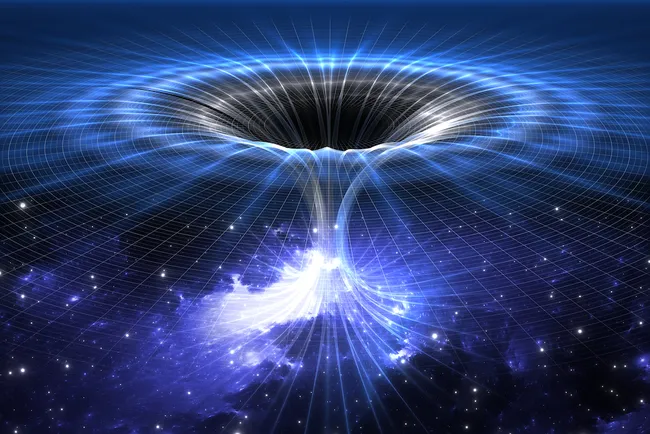Math Is Fun Forum
You are not logged in.
- Topics: Active | Unanswered
Pages: 1
#1 2024-06-10 17:38:47
- Jai Ganesh
- Administrator

- Registered: 2005-06-28
- Posts: 52,730
Wormhole
Wormhole
Summary
Wormhole, solution of the field equations in German-born physicist Albert Einstein’s theory of general relativity that resembles a tunnel between two black holes or other points in space-time. Such a tunnel would provide a shortcut between its end points. In analogy, consider an ant walking across a flat sheet of paper from point A to point B. If the paper is curved through the third dimension so that A and B overlap, the ant can step directly from one point to the other, thus avoiding a long trek.
The possibility of short-circuiting the enormous distances between stars makes wormholes attractive for space travel. Because the tunnel links moments in time as well as locations in space, it also has been argued that a wormhole would allow travel into the past. However, wormholes are intrinsically unstable. While exotic stabilization schemes have been proposed, there is as yet no evidence that these can work or indeed that wormholes exist.
Details
A wormhole is a hypothetical structure connecting disparate points in spacetime, and is based on a special solution of the Einstein field equations.
A wormhole can be visualized as a tunnel with two ends at separate points in spacetime (i.e., different locations, different points in time, or both).
Wormholes are consistent with the general theory of relativity, but whether wormholes actually exist remains to be seen. Many scientists postulate that wormholes are merely projections of a fourth spatial dimension, analogous to how a two-dimensional (2D) being could experience only part of a three-dimensional (3D) object. A well-known analogy of such constructs is provided by the Klein bottle, displaying a hole when rendered in three dimensions but not in four or higher dimensions.
Theoretically, a wormhole might connect extremely long distances such as a billion light-years, or short distances such as a few meters, or different points in time, or even different universes.
In 1995, Matt Visser suggested there may be many wormholes in the universe if cosmic strings with negative mass were generated in the early universe. Some physicists, such as Kip Thorne, have suggested how to make wormholes artificially.
Visualization
For a simplified notion of a wormhole, space can be visualized as a two-dimensional surface. In this case, a wormhole would appear as a hole in that surface, lead into a 3D tube (the inside surface of a cylinder), then re-emerge at another location on the 2D surface with a hole similar to the entrance. An actual wormhole would be analogous to this, but with the spatial dimensions raised by one. For example, instead of circular holes on a 2D plane, the entry and exit points could be visualized as spherical holes in 3D space leading into a four-dimensional "tube" similar to a spherinder.
Another way to imagine wormholes is to take a sheet of paper and draw two somewhat distant points on one side of the paper. The sheet of paper represents a plane in the spacetime continuum, and the two points represent a distance to be traveled, but theoretically, a wormhole could connect these two points by folding that plane (i.e. the paper) so the points are touching. In this way, it would be much easier to traverse the distance since the two points are now touching.

It appears to me that if one wants to make progress in mathematics, one should study the masters and not the pupils. - Niels Henrik Abel.
Nothing is better than reading and gaining more and more knowledge - Stephen William Hawking.
Offline
Pages: 1